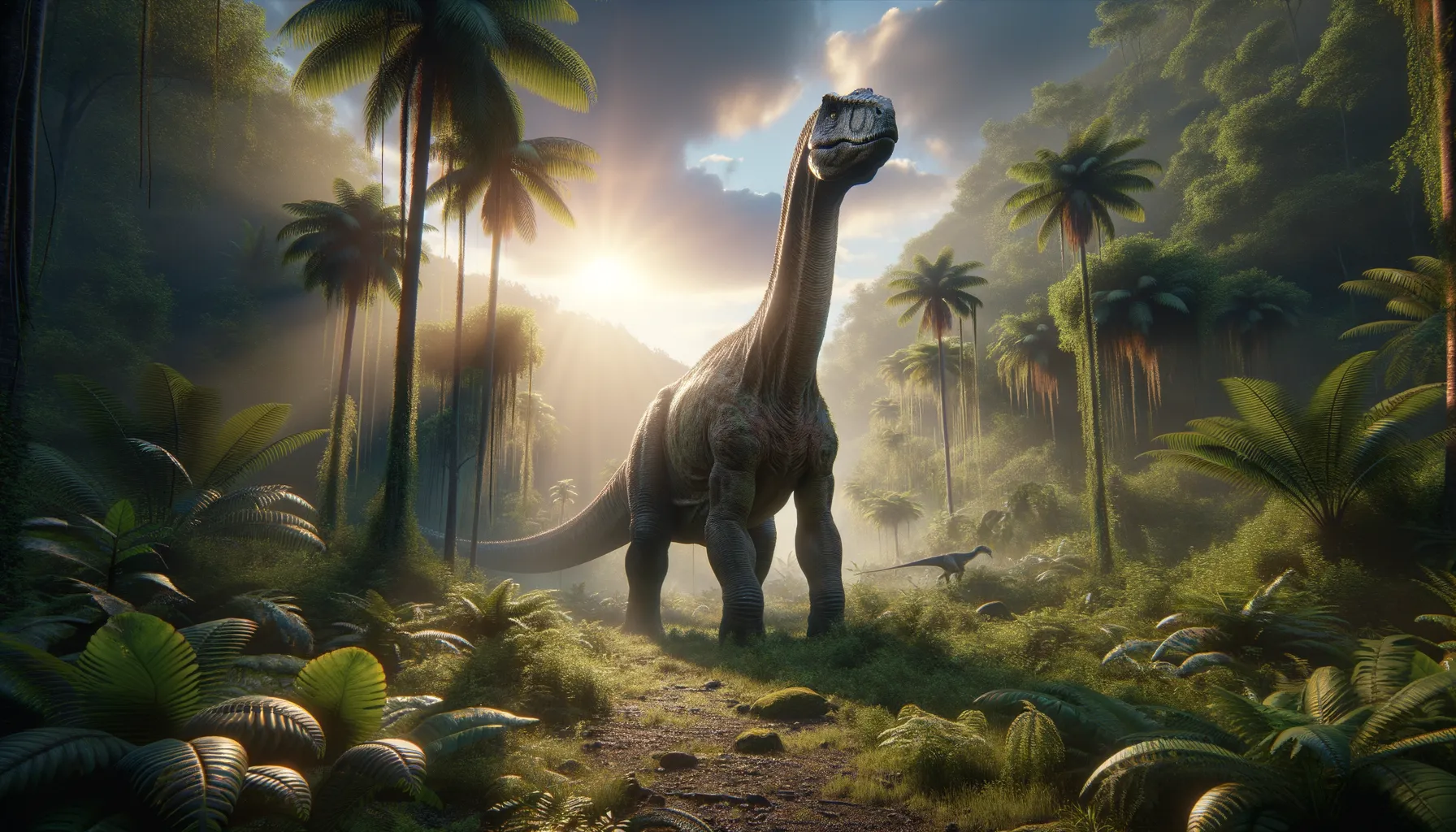
Tengrisaurus
The gentle giant of ancient lands.
Period
Cretaceous
Length
Reached up to 10 meters in length.
Height
Approximately 3 to 4 meters tall.
Weight
Estimated to weigh several tons.
Tengrisaurus was a massive, long-necked dinosaur that roamed the landscapes of Asia during the Cretaceous period. As a member of the sauropod group, it was characterized by its enormous size, long neck, and small head. Fossil remains have provided us with insights into its size and habitat preferences, though much about its lifestyle remains a mystery. It thrived in what would have been lush, vegetation-rich environments.
Diet
Tengrisaurus was herbivorous, feeding primarily on the plentiful vegetation available during its era. Its long neck allowed it to reach high into trees or sweep the ground for ferns and low-lying plants.
Hunting
Being a herbivore, Tengrisaurus did not hunt for food. Instead, it spent much of its day foraging and grazing across large expanses to satisfy its substantial dietary needs.
Environmental challenges
Tengrisaurus faced environmental challenges such as seasonal changes that influenced the availability of its food sources. Predators posed a risk, although its massive size offered substantial protection. Natural disasters like volcanic eruptions or climate shifts could have also impacted its environment significantly.
Speed
Tengrisaurus likely moved at a slow pace.
Lifespan
Estimated lifespan of several decades.
First discovery
Discovered in Mongolia in 2010.
Fun Facts
- Tengrisaurus is a dinosaur discovered in the Transbaikal region of Russia.
- It lived during the Early Cretaceous period, which was around 130 million years ago.
- This dinosaur was a type of sauropod, known for its large size and long neck.
- Tengrisaurus was named in recognition of Tengri, a deity in Tengriism, reflecting its location of discovery.
- It is known from a few fossil bones, including parts of its vertebrae.
- Paleontologists believe Tengrisaurus would have been a plant-eating dinosaur.
- The discovery of Tengrisaurus helps scientists understand the diversity of sauropods in Asia during the Cretaceous period.
Growth and Development
Tengrisaurus, like other sauropods, likely experienced rapid growth during its early years to quickly reach a size that would deter most predators. Much of its life was spent reaching its enormous adult size, maximizing its feeding efficiency with its long neck. As it matured, its physical robustness increased alongside its understanding of the habitat's resources.
Habitat
The habitat of Tengrisaurus included plains and open woodlands with abundant vegetation. It required vast areas to sustain its herds due to its large size and food intake needs. The climate would have been warm, supporting a rich diversity of plant life.
Interaction with other species
Tengrisaurus likely interacted with other herbivorous dinosaurs in its environment, potentially forming mixed-species groups for added protection. Predatory dinosaurs would have been a natural threat, and its interactions with them might have largely involved evasion or deterrence due to its size. Its presence contributed to the ecological balance by facilitating plant growth through grazing.
Natural lifespan
Tengrisaurus may have lived for 50 to 60 years under natural conditions.
Reproduction
Tengrisaurus likely reproduced by laying eggs, with nesting sites potentially established in safe, secluded areas. Young sauropods would have been vulnerable to predators, necessitating protective behaviors from adults. Hatchlings grew rapidly, joining herds for safety as they matured.
Social behaviour
Tengrisaurus is believed to have been social, living in groups that provided security through numbers. Its herding behavior facilitated efficient resource usage and protection against predators. Social interactions would have included communication through body language and sounds.
Fossil locations
Fossils of Tengrisaurus have been primarily found in Mongolia, specifically in areas indicative of its historical habitat range. These locations have provided valuable insights into the dinosaur that roamed these regions millions of years ago.
